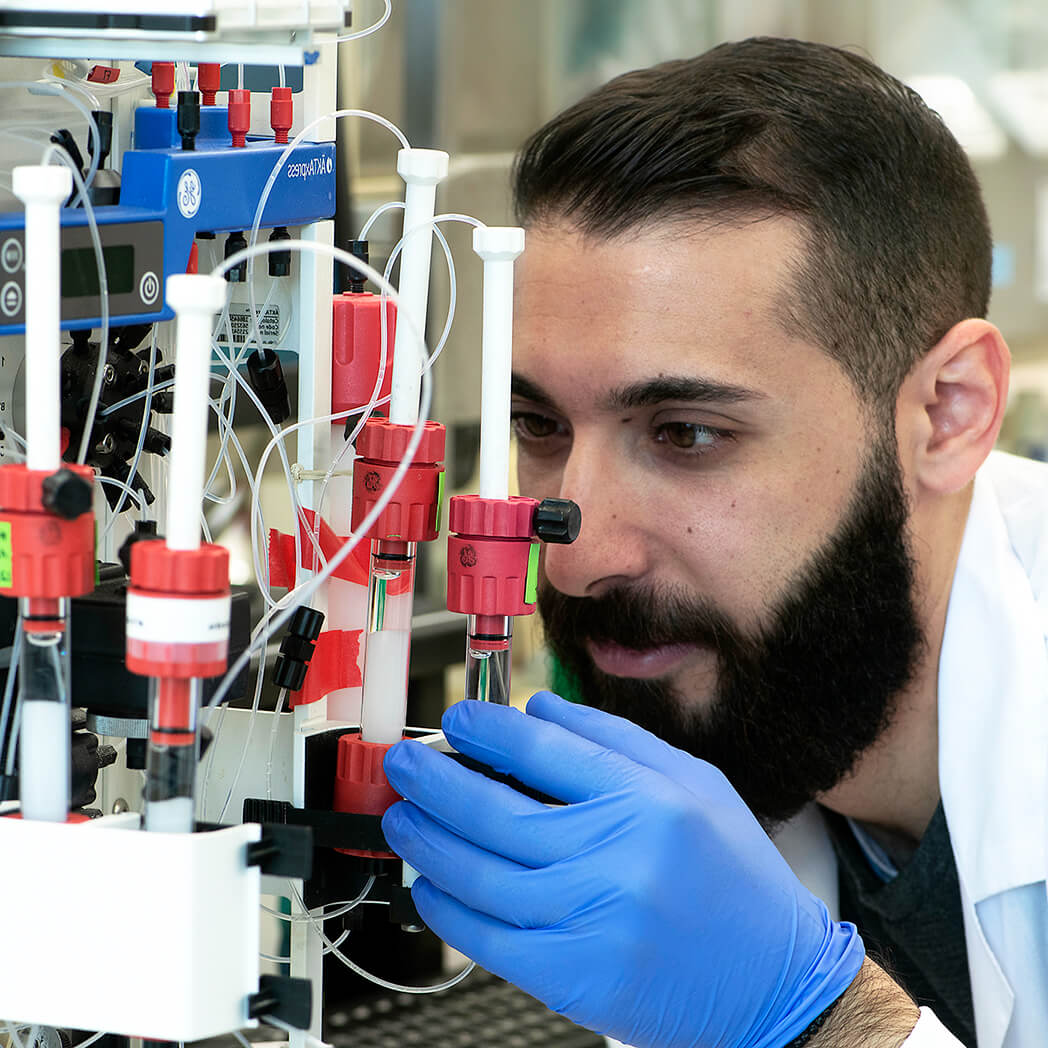Overview
Cat #:
ASC-045-APC
Alternative Name Sodium channel protein type 5 subunit alpha, Voltage-gated sodium channel subunit alpha Nav1.5, Long QT Syndrome 3, LQT3
Lyophilized Powder yes
Type: Polyclonal
Host: Rabbit
Reactivity: h, m, r
ImmunogenPeptide CESFNVTGELYWTKVK, corresponding to amino acid residues 1386 - 1401 of mouse SCN5A (Accession
Q9JJV9). Extracellular, 11
th loop (3
rd loop of 3
rd repeat).
Accession (Uniprot) Number Q9JJV9
Gene ID 20271
Peptide confirmation Confirmed by amino acid analysis and mass spectrometry.
Homology Rat – identical, Human – 14 out of 16 residues identical.
Purity Affinity purified on immobilized antigen.
Form Lyophilized powder. Reconstituted antibody contains phosphate buffered saline (PBS), pH 7.4, 1% BSA, 0.05% NaN3.
Form Lyophilized powder. Reconstituted antibody contains phosphate buffered saline (PBS), pH 7.4.
Isotype Rabbit IgG.
Label Allophycocyanin (APC).
Storage before reconstitution The antibody ships as a lyophilized powder at room temperature. Upon arrival, it should be stored at -20°C.
Reconstitution 15 µl or 50 µl double distilled water (DDW), depending on the sample size.
Antibody concentration after reconstitution 1 mg/ml.
Storage after reconstitution The reconstituted solution can be stored at 4°C, protected from the light, for up to 1 week. For longer periods, small aliquots should be stored at -20°C. Avoid multiple freezing and thawing. Centrifuge all antibody preparations before use (10000 × g 5 min).
Standard quality control of each lot Western blot analysis (unlabeled antibody, #ASC-045), and direct flow cytometry (labeled antibody). Applications: fc, lci
Scientific background Voltage-gated Na+ channels (NaV) are responsible for myocardial conduction and maintenance of the cardiac rhythm and are essential for the generation of action potentials and cell excitability.1 Dysfunction or disregulation of cardiac sodium channels can cause several disorders, including cardiac arrhythmias.
The majority of Na+ channels in the mammalian heart are Tetrodotoxin (TTX)-insensitive NaV1.5.2
The putative structure of NaV1.5 consists of four homologous domains (I-IV), each containing six transmembrane segments (S1-S6). Mutations in the C-terminus of NaV1.5 were described in connection to Long QT syndrome and Brugada syndrome.1-2 Recent data have demonstrated selective expression of NaV1.5 in the mouse central nervous system and implicated a role for NaV1.5 in the physiology of the central nervous system.1
Lyophilized Powder
For research purposes only, not for human use
Last Update: 05/02/2025
